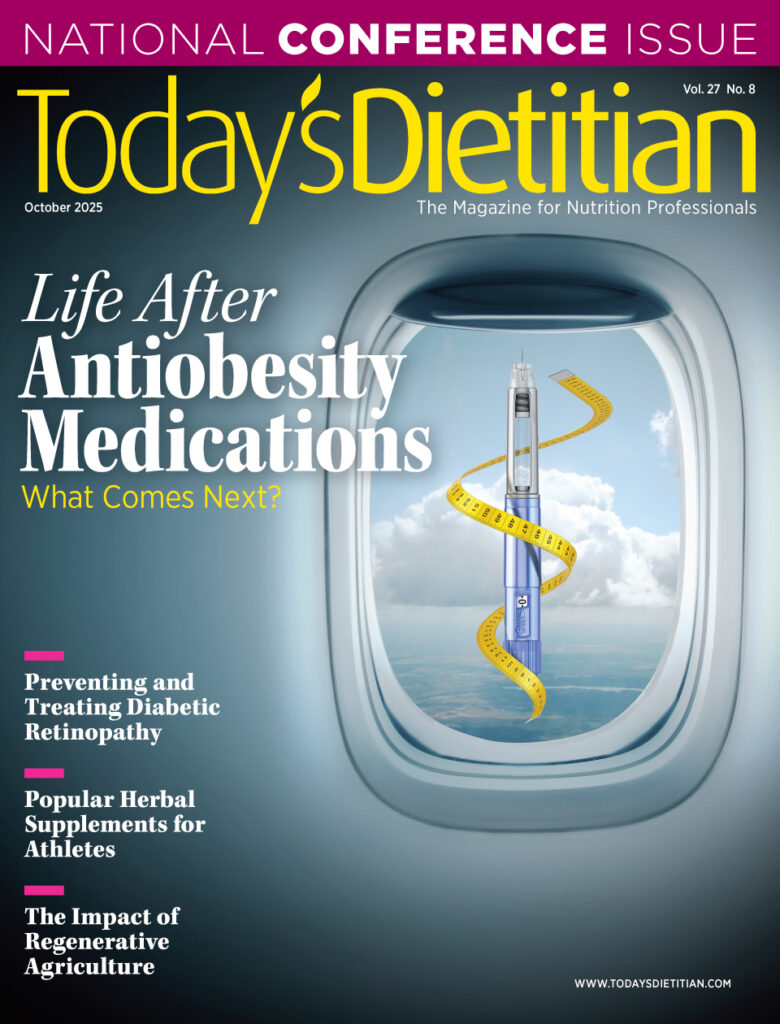The newest generation of antiobesity medications (AOMs)—GLP-1 (glucagon-like peptide-1), GIP (glucose-dependent insulinotropic polypeptide), dual action GLP-1/GIP combinations, triple action injectables, and emerging injectable and oral medications—have changed the landscape for weight management, bringing weight loss success to many for whom weight maintenance had previously not been possible.
Feature
At the most fundamental level, diabetic retinopathy (DR) is a metabolic disease of the retina. When excessive glucose is present in the blood stream—as is the case with poorly controlled type 1, type 2, and gestational diabetes—several metabolic pathways are upregulated to handle the hyperglycemic state.
Like many other dietary supplements, herbal supplements (HSs) continue to receive enormous attention from competitive and recreational athletes.
Regenerative agriculture is the new buzz word in sustainable farming. But what does it really mean? Does it do all it promises? How can food and nutrition experts sort facts from hype and help clients do the same?
Metabolic syndrome (MetS) is a collection of disorders that include abdominal obesity, hypertension (HTN), dyslipidemia including high triglycerides (TGs) and/or low HDL cholesterol, and impaired glucose metabolism (elevated fasting blood glucose).
If you’re headed to FNCE®, get ready to enjoy award-winning modern southern cuisine, farm-to-table fare, and global eateries galore.
Human trafficking is one of the fastest growing global enterprises, involving over an estimated 50 million women, men, and children in nearly every country of the world.
As the global burden of diabetes escalates, health care professionals, especially dietitians, must lead the way in addressing the lifestyle demands for these populations.
Excitement coursed through this UNESCO World Heritage city, where nutrition professionals were warmly greeted by miles of charming walking paths lined with restaurants, shops, and historic sites nestled along San Antonio’s famous River Walk.
Food insecurity (FI) is a critical public health challenge in the United States that impacts the nutrition and health of millions of families and individuals, including older adults.


